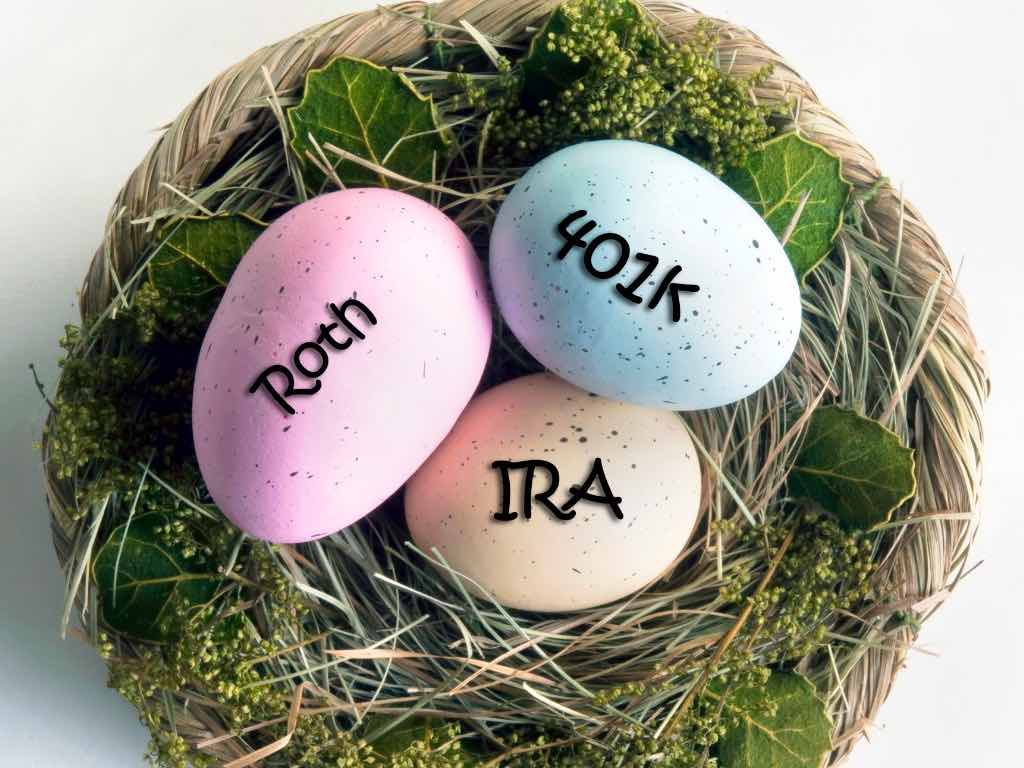
Backdoor Roth IRA: How to Build Your Nest Egg with an Accepted Tax Loophole
March 21, 2022
 By Tom Limoges
By Tom Limoges
Vice President - InvestmentsSpringtime brings with it fresh air, budding trees and the robins with their uplifting songs. The arrival of the robins is often considered one of the very first signs of spring. Soon, they build their nests in anticipation of laying their eggs and caring for the baby birds to come. These signs give us hope for warmer days ahead!
Yet, another sign of spring is always the tax deadline (April 18 this year). As Tax Day approaches, I thought I would share this tip for anyone looking to add a little more to their retirement nest egg – and to possibly reduce their future tax bills.
Unique Tax Benefits of IRAs
For many retirement savers, Individual Retirement Accounts (IRAs) offer unique tax benefits. But there is a difference between those benefits, depending on the type of IRA to which you contribute — Traditional IRAs or Roth IRAs.
Traditional IRA vs. Roth IRA
Traditional IRA contributions are tax-deductible now, however you will be taxed at the normal income rate when you withdraw your funds later (typically in retirement). Roth IRA contributions, on the other hand, provide zero tax break now — but later, your earnings and withdrawals will generally be tax-free.
Taxpayers have until the Federal tax deadline to make IRA contributions for the previous year. Keep in mind there are also limits to what you can contribute:
CHANGES IN CONTRIBUTION LIMITS, 2021-22
| |
2021
|
2022
|
| 401(k), 403(b), Roth 401(k) and Most 457 Plans |
$19,500 |
$20,500 |
| Retirement Plan Catch-up (Age 50 or over)* |
$6,500 |
$6,500 |
| Traditional & Roth IRAs |
$6,000 |
$6,000 |
| IRA Catchup Contribution (Age 50 or over)* |
$1,000 |
$1,000 |
| Health Savings Account - Single |
$3,600 |
$3,650 |
| Health Savings Account - Family |
$7,200 |
$7,300 |
Source: IRS.gov
However, not everyone qualifies to make tax-deductible contributions to their IRA, thanks to the Internal Revenue Code restrictions on high-income earners. For example, in 2021 if your modified adjusted gross income was $140,000 (single) or $208,000 (married filing jointly), you couldn't make a Roth IRA contribution. For 2022, the AGI limits are $144,000 (single) or $214,000 (married filing jointly).
Over the last several weeks I have received questions from clients who fall into this category. But for those in this situation, there is a solution – the Backdoor Roth IRA.
What is a Backdoor Roth IRA?
The “Backdoor Roth IRA” is a loophole in the tax code that allows you to get around the limits for contributing to your IRA. While the name sounds suspect, it is allowed by the Internal Revenue Code and widely used. Here's how the Backdoor Roth IRA works:
- The person makes a contribution to a "non-deductible" IRA (subject to same contribution limits as a traditional IRA, without the benefit of a federal tax deduction).
- The person immediately converts this non-deductible IRA into a Roth IRA.
Since this is now seen a “conversion” instead of a “contribution,” it is allowed and the tax burden upon withdrawal is still relieved (like for any Roth IRA).
Please be aware, not everything is as easy as it sounds. You should still check with your accountant to be sure you qualify. Also, there are specific tax rules set forth by the Internal Revenue Code for savers with established IRAs who might want to convert non-deductible IRAs to Roth IRAs; this could require the advice of a CPA or financial advisor.
Other Ways to Boost Retirement and Save on Taxes
There are other options to boost your retirement savings while lowering your tax bill, such as maximizing an employee sponsored 401(k) plan and/or maximizing Health Savings Accounts (HSAs), if available. These are all good topics to discuss with a CPA. If there are any questions/concerns on opening these accounts, please contact your SNB Wealth Management advisor.
While the robins are looking for the best, safest, warmest place to make their home for their new family, we are also thinking ahead to keep your financial interests healthy and secure. Hopefully, with the help of something like the “Backdoor Roth IRA,” your nest egg will continue to grow.
IMPORTANT NOTE: This article is for information purposes only, and Security National Bank is not a tax adviser company. There may be additional guidelines and information, regarding your personal tax situation, not included in this article. For more information, you should always contact your tax adviser or visit the IRS website.